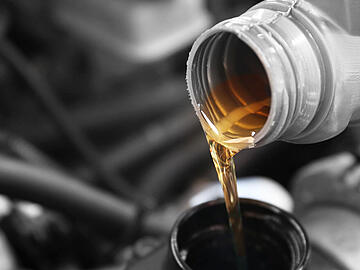
Analysis of Elemental Impurities in Diesel by HR ICP-OES According to ASTM D7111-16 Application Note · PlasmaQuant 9100 Elite
Introduction
Diesel is a mixture of kerosene and different middle distillate fractions, which are produced by fractionation of crude oil. Further components of diesel products may be a certain portion of biodiesel (up to 7%) and additives (ppm concentration range) to adjust properties such as ignitability, cetane number, lubricity, acidity and stability.
Elemental impurities in diesel products contribute to properties like shelf life, wear of engine components and exhaust treatment devices as well as emission levels of environmental pollutants and particulate matter. Copper, for instance, plays a significant role as catalyst in the oxidation process resulting in high molecular weight compounds with limited solubility in the diesel mixture. Hence, low copper levels are essential to guarantee long shelf life. Alkaline and alkaline earth metals like sodium, potassium, magnesium and calcium may be present as metal soaps or abrasive solids, which increase the wear of engine components (injector, fuel pump, etc.) and may cause filter plugging and engine deposits.
The level of sulfur is one of the major specification parameters for diesel fuel. Regulations in Europe, North America and the Asia Pacific region continuously decreased the maximum allowable level of sulfur to 10 mg/kg over the past decades. Sulfur as well as phosphorus contents need to be kept at a minimum level since their combustion products are potentially harmful for exhaust treatment devices and increase the wear of small engine parts. This in turn results in shorter maintenance intervals or eventually in engine failure.
Furthermore, sulfates and sulfur dioxide emission as a product of diesel combustion can be reduced significantly by using ultra-low-sulfur diesel (ULSD) as fuel in on- and off-road vehicles.
Monitoring elemental contaminations in diesel fuel is subject of regulations such as the ASTM D7111-16, which specifies the analysis of 24 elements by means of inductively coupled plasma optical emission spectroscopy (ICP-OES).
Diesel is a challenging sample matrix to be analyzed by ICP techniques. The high load and carbon content of the organic matrix requires a robust sample introduction and plasma system, which reliably excites the samples within the ICP and does not suffer from carbon build-up within the torch system. For this challenge, the vertical geometry of the V-Shuttle torch and the unique high-frequency generator in the PlasmaQuant 9100 have proven themselves, which is confirmed by the direct analysis of undiluted diesel. Spectral interferences originating from the unspecific carbon background of the sample matrix are a major challenge to reliably measure trace concentrations of elements like lead, arsenic, sodium or zinc. To account for these interferences, classical ICP-OES needs to employ laborious calibration strategies such as standard addition calibration or to select alternative emission lines with less sensitivity, which compromises the achievable limits of detection (LOD). The high-resolution optical system of the PlasmaQuant 9100 Elite (2 pm @ 200 nm) in combination with the CSI software algorithm (correction of spectral interferences) avoid such compromises since the most sensitive emission lines remain interference-free and hence, available for measurement.
The here presented methodology analyzes diesel samples by using an external calibration in kerosene as described in ASTM D7111-16. The use of primary emission lines throughout all investigated elements as well as the possibility to run undiluted samples allow for LODs in the range of 1 μg/kg and below on a routine basis.
Download the complete Application Note
Analysis of Elemental Impurities in Diesel by HR ICP-OES According to ASTM D7111-16 (EN)
Open PDFContact us
The newsletter of Analytik Jena frequently keeps you posted about:
- News
- Trends and developments
- Events
